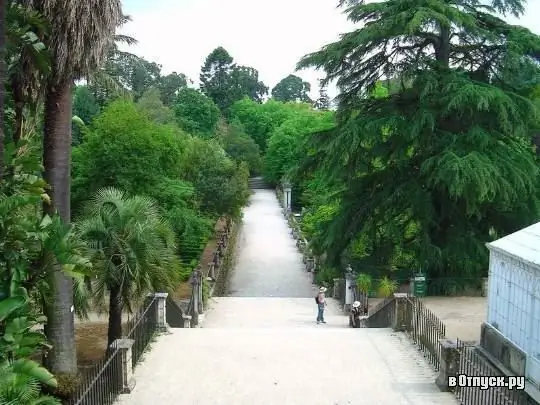
Description of the attraction
The botanical garden was founded in 1772-1774. Almost immediately after its foundation, it was merged with the National History Museum, the creator of which was the Marquis of Pombal. The location for the garden was chosen by the Vice-Chancellor of the University of Coimbra Francisco de Lemos. The garden is located on land that used to belong to the School of St. Bento, which was located in the valley of the Ursulines. The first curator of the garden was Domingos Vandelli, and in 1791 he was replaced by Felic Alevar Brothero, professor of botany and agriculture. The garden was constantly expanding, new specimens of plants appeared, and today the garden covers an area of 13 hectares.
The Botanical Garden of the University of Coimbra is considered one of the most beautiful gardens in Europe and consists of two parts. One part of it is located on a hill and is divided into terraces. The lower terrace is called Quadrado Central and is the oldest part of the garden. The terrace is adorned with a fountain from the 40s; you can see trees planted during the time of the garden's curatorship by Felix Brothero. The elements of the terrace decor have a lot in common with the decor of European gardens in the 18th century. On other terraces you can see greenhouses with tropical and subtropical trees, and flower beds of entire families of plants. In these flower beds, the plants are taxonomically grouped and grown for use by botany students, as well as for exchange with other similar institutions around the world that have botanical gardens.
In the second part of the garden there is a valley, through which a small stream flows, and where the arboretum is located. There are many bamboo trees and other exotic plants growing there. Also, the second part of the garden is famous for its excellent collection of eucalyptus (51 species). Birds live in the garden. The brown squirrel families are part of an ecosystem that was successfully introduced in June 1994. Squirrels were the first animals that adapted well to the environment and began to reproduce.






